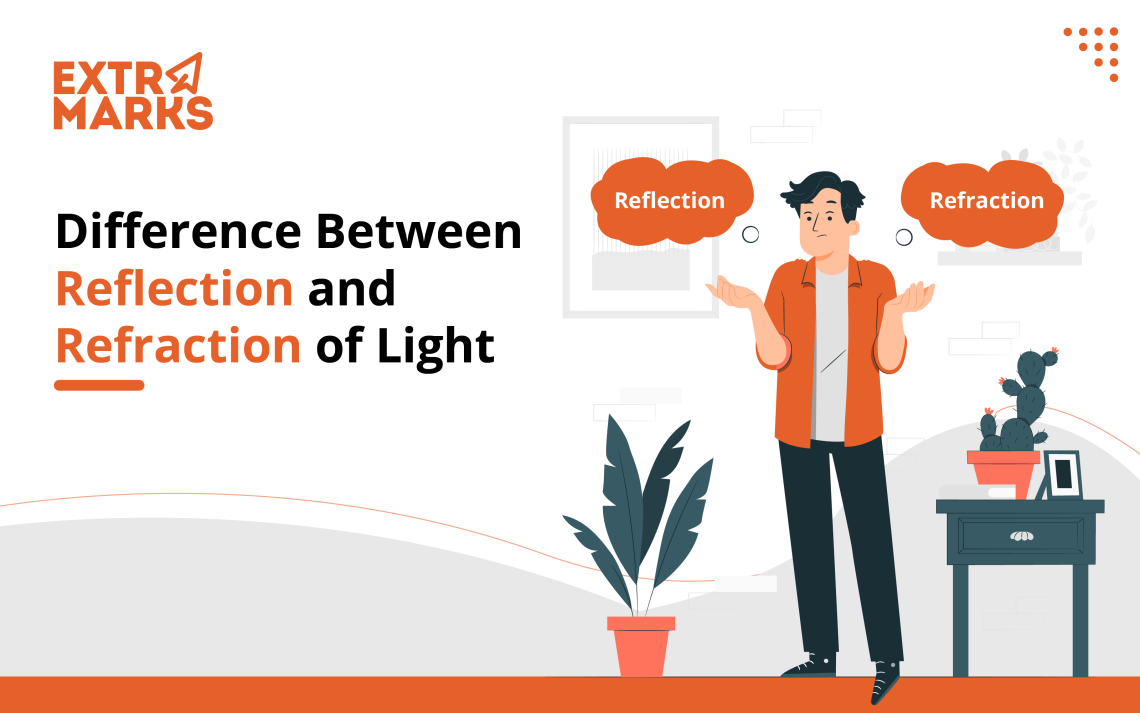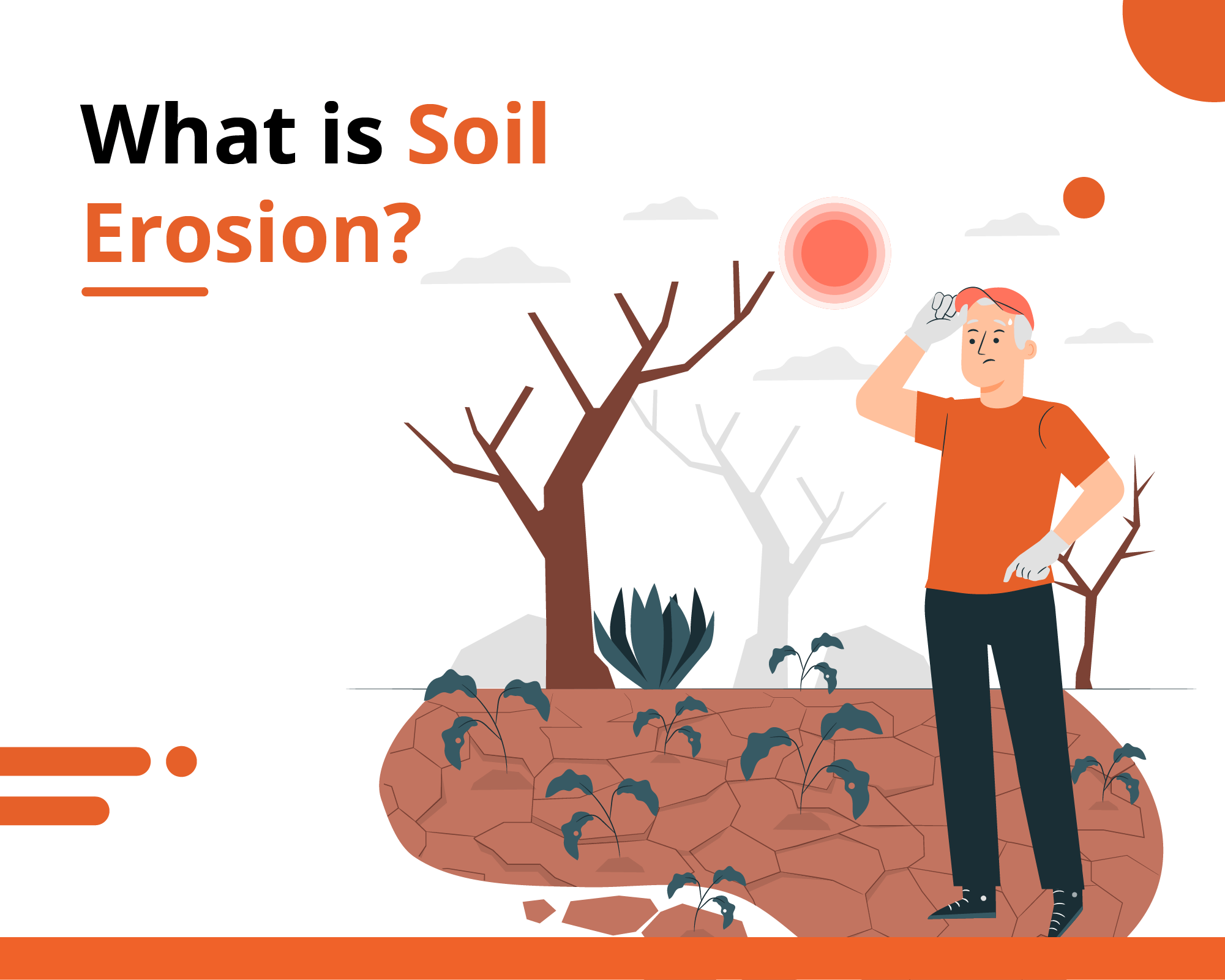Difference Between Reflection and Refraction of Light

When light reflects from a surface or travels from one medium (transparent) to another or via a medium then it changes direction. When light passes through a different medium, two varied phenomena happen Reflection and Refraction. Reflection and Refraction are the two major phenomena related to the propagation of a beam of light. Lot of students wonder what is the difference between reflection and refraction so here is a detailed blog to help you understand it.
What is Reflection?
Simply put, reflection means “the rebounding of light, sound, heat, or another object back to the source, without absorbing it.”
Reflection of light modifies the direction of the beam of light as it strikes the plane so the ray reverts to the medium in which it first got produced.
The law of reflection says:
“The angle of incidence is identical to the angle of reflection. The ray of incidence, the ray of reflection, and the normal drawn at the point of incidence, to the mirror, occurs on the same plane.”
Two types of Reflection:
1. Regular reflection: Regular reflection also called specular reflection occurs when the light beams strike a regular, polished, and smooth plane.
2. Irregular reflection: Irregular reflection also called diffuse reflection occurs when the light beam strikes a rough surface and reflects light in numerous directions.
What is Refraction?
“Refraction is the phenomenon of light in which light wave is diverted when it crosses/passes through (diagonally) the interface between two media of different densities. It refers to the shift in direction and speed of the beam of light waves, because of the change in the transmission medium.”
“Refractive index is the ratio of the angle of incidence to the angle of refraction.”
It determines a ray of light’s speed in the new medium meaning with the density of the medium, speed of light will be slow, and vice versa.
The law of refraction states that:
“The ratio of the sine of the angle of incidence and the sine of the angle of refraction is constant in any two-given medium. The incident ray, the refracted ray, and normal ray at the interface of any two-given medium, all lie in the same plane.”
Let us now discuss what are the important difference between reflection and refraction in tabular form:
Reflection vs Refraction
| Reflection | Refraction |
| This phenomenon of reflection is usually noticed in mirrors or other shiny surfaces. | Refraction usually happens in Lenses. |
| There is a simple definition for reflection. reflection of light is when it strikes the plane’s medium (there is no penetration of the light). | Refraction is the process of light shifting when it passes through a medium resulting in the bending of the light. |
| The light that enters the medium comes back in the same direction. | The light that enters the medium travels from one medium to another. |
| Reflection considers the light waves, bouncing from the plane and changing direction. | The light waves go through the surface while concurrently changing from medium to medium. |
| The angle of incidence is equal to the angle of reflection. | The angle of incidence is not equal to the angle of reflection. |
As we have seen the difference between reflection and refraction, let us now discuss some Examples of Reflection and Refraction.
Examples of Reflection and Refraction
The mirror (rearview mirror in vehicles) is a classic example of the phenomenon of reflection. The Microscope is another example as utilizes a mirror as well. An astronomical reflecting telescope that uses a parabolic mirror and a plane mirror are also examples of reflection.
There are numerous phenomena based on refraction like how the object bends when partially submerged in water, or the mirages seen in a hot desert.
Facts about Reflection and Refraction:
1. Light travels in a vacuum at 300,000 km per second (186,000 miles per second).
2. As the light goes into a medium that is denser, the light ray will ‘bend’ toward the normal. When it goes back into the less dense medium (with a lower refractive index), it will bend back through the same angle as when it came in (if the surface at exit is parallel to the surface at entry).
3. Light doesn’t travel as fast when it has to pass through mediums that are different, such as air, water or glass. These mediums cause the light to ‘refract’ and that slows the light down.
4. With the help of NCERT Solutions Class 10th Study material by Extramarks, you can clear your concepts for more topics like Sources of Energy, Acids, Bases, and Salts.
What is the difference between reflection and refraction of light?
The major difference between reflection and refraction is that the former refers to the bouncing back of the light into the light-originating source while the latter covers the bending of light when it passes through one medium to another.
What kind of mirrors is in use in the headlights of vehicles and why?
In the headlights of the vehicles, a concave or converging mirror is used as it has a “reflecting surface which recessed inward.” They are used to focus light as they produce an image at infinity when an object is put in its focus area. These concave mirrors are reflectors used in vehicles.
What are the two types of refractive index?
1. “Relative refractive index: When light travels from one medium to another medium, then it is called relative refractive index.”
2. “Absolute refractive index: When light travels from a vacuum to another medium, then it is called absolute refractive index.”
What are examples of reflection and refraction?
Here are some examples of Reflection and Refraction:
1. Mirrors (reflection)
2. Shiny surface (reflection)
3. Oil in a glass bottle (refraction)
4. Lens (refraction)
5. Foil (reflection)
6. Prism (refraction)
7. Glass of water with a spoon in it (refraction)
8. Glass (refraction)
What is the difference between a reflected and refracted ray?
The difference between light reflection and refraction is simple. In reflection, the light ray striking the plane returns to the originating source/medium as the waves spring off the surface. However, in refraction, the waves go through the surface and it alters their speed and direction.
Learn more with Extramarks as your Science Companion and enhance your Science Knowledge. Extramarks helps you to keep yourself updated with latest Science Facts which would help to build your interest and keep all the facts on your tips so that you can crack any competitive exam like JEE Exam, NEET Exam, and many more.
Last Updated on February 27, 2024













